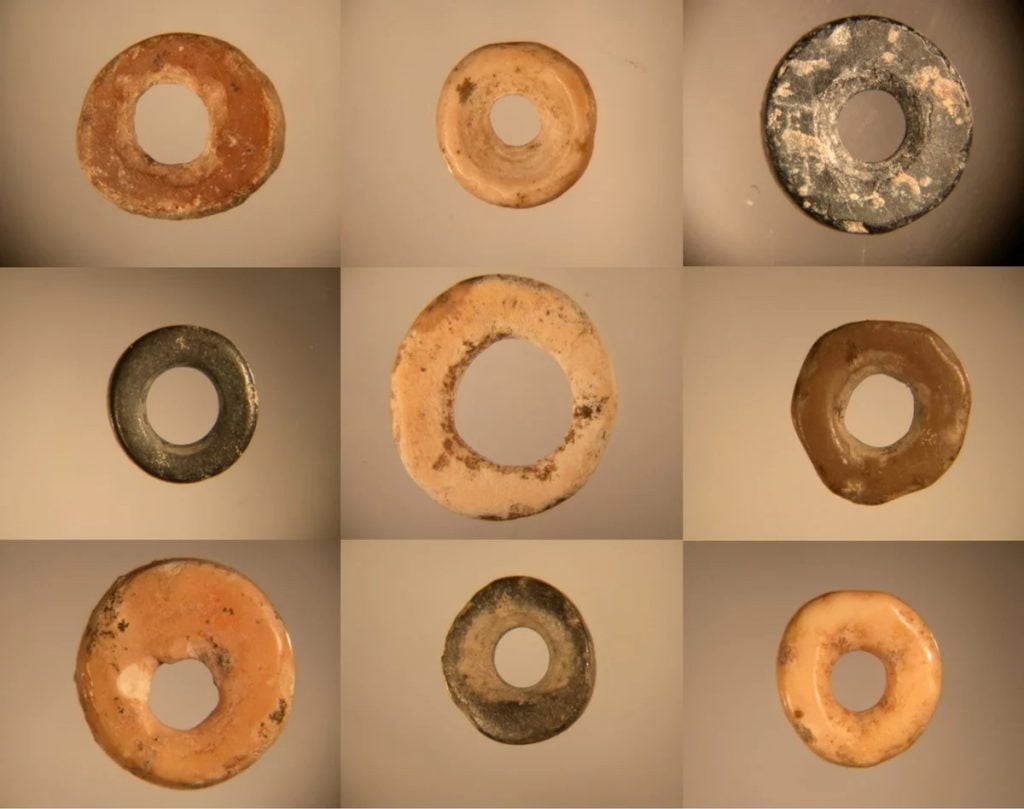Archaeology & History
How a Wildly Popular Fashion Trend That Dominated Stone Age African Civilizations Suggests a 50,000-Year-Old Social Network
Tiny beads led to a big discovery for archaeologists.

Tiny beads led to a big discovery for archaeologists.

Sarah Cascone

Scientists have discovered what they believe to be a 50,000-year-old social network—perhaps the world’s earliest—thanks to pieces of Stone Age jewelry scattered across southern and eastern Africa.
Humans are thought to have begun wearing beads some 75,000 years ago, making them one of the earliest forms of human adornment.
For a study recently published in the journal Nature, researchers from the Max Planck Institute for the Science of Human History in Jena, Germany, examined more than 1,500 ancient beads excavated at 31 sites across an 1,800-mile region and found that, despite disparities in the communities, they manufactured nearly identical doughnut-shaped, ostrich-shell beads, often with the same thickness and diameter.
“People made them to communicate symbolic messages, the way that today we might wear a wedding ring, to indicate something about social status, wealth, or position in society,” Jennifer Miller, who co-authored the study, told CNN.

Oldupai Gorge, Tanzania. Photo ©Yiming Wang.
The similarities in the beads from different areas suggests a coherent social network spanning a large distance, tying the south of the continent to the east. Beads may have been traded between groups as a sign of allyship—or the trend might have spread from community to community.
“Possibly people would have seen this new thing that people were were wearing or making and thought, ‘Oh, that’s so cool.’ And then mimicked it,” Miller added, noting that this was the first cultural evidence of contact between these faraway settlements. “It’s kind of mind-boggling that these people, who lived 40,000 to 50,000 years ago, would have had some kind of social network that spread over such a long distance.”
Evidence of this social network disappears about 33,000 years ago, when beads appear to die out in the south. (The practice of bead making reappears again 19,000 years ago.) At the time, there was a drought in eastern Africa as the tropical rain belt shifted south, potentially causing flooding that could have broken off communication between the regions.
“Through this combination of paleoenvironmental proxies, climate models, and archaeological data, we can see the connection between climate change and cultural behavior,” Miller’s co-author, Yiming Wang, told Tech Explorist.
Studying the beads further, experts hope, will help us understand social dynamics in Africa during the late Pleistocene era, roughly 126,000 to 11,700 years ago.
“It’s like following a trail of breadcrumbs,” Miller told the Guardian. “The beads are clues, scattered across time and space, just waiting to be noticed.”